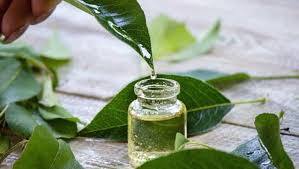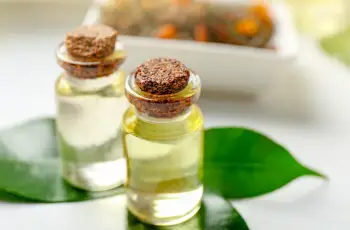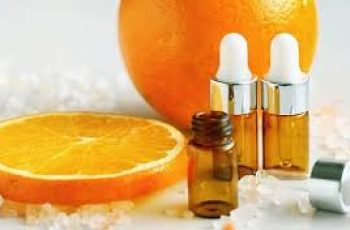
Tea Tree Oil for Back Acne: Does It Really Work?
Most of us think of acne as a face-only problem. But if you’ve noticed stubborn pimples on your back, you’re not alone. Back acne, or “bacne,” is incredibly common—and yes, it can be just as frustrating.
While many turn to skincare products and dermatologists for facial acne, back acne often gets ignored. But it shouldn’t be.
Especially during the monsoon season, sweat, humidity, and friction can make back breakouts even worse.
Luckily, there are natural options like tea tree oil that might help soothe and treat mild back acne. But how effective is it? And how do you use it safely?
Let’s take a closer look at the causes of back acne, what makes tea tree oil a potential remedy, and how to use it properly—plus when to seek stronger treatment.
What Causes Back Acne?
Back acne doesn’t just appear out of nowhere. It’s often triggered by a combination of blocked pores, excess oil, and bacteria—just like facial acne.
But some unique factors make back acne more likely:
🔹 1. Clogged Sebaceous Glands
Dead skin cells and sebum (oil) can clog the pores on your back. This buildup creates the perfect environment for acne to form.
🔹 2. Overproduction of Sebum
The skin on your back has more sebaceous glands than many other areas. When these glands produce too much oil, it can lead to acne.
🔹 3. Bacterial Imbalance
A specific bacteria called Cutibacterium acnes (formerly Propionibacterium acnes) can overgrow on oily skin and cause inflammation and breakouts.
🔹 4. Hormonal Changes
Hormonal shifts—especially during puberty, pregnancy, or menstrual cycles—can increase oil production, leading to breakouts on the back and body.
🔹 5. Poor Hygiene or Friction
Tight clothes, sports gear, backpacks, and sweaty fabric can cause friction that irritates the skin and clogs pores.
Who’s Most at Risk for Back Acne?
Back acne can affect anyone, but some people are more prone to it.
👧 Young Girls and Teens
Hormonal changes during puberty often trigger acne on the face and body.
🤰 Pregnant Women
Pregnancy hormones, especially progesterone, can lead to overactive sebaceous glands and breakouts.
🏋️♀️ Athletes and Gym-Goers
Frequent sweating, tight clothes, and constant movement cause friction and clogged pores. This can also lead to folliculitis, an infection of the hair follicles.
💊 Women with PCOS
Polycystic Ovary Syndrome (PCOS) is linked to high androgen levels, which can lead to more oil production and body acne.
Can Tea Tree Oil Help With Back Acne?
You’ve probably seen tea tree oil listed in cleansers, serums, or even spot treatments. That’s because it has several properties that may help with acne.
💧 What is Tea Tree Oil?
Tea tree oil is a natural essential oil extracted from the leaves of the Melaleuca alternifolia plant, native to Australia. It’s known for its antibacterial, anti-inflammatory, and antifungal effects.
Tea Tree Oil Benefits for Acne-Prone Skin
Here’s how tea tree oil may help improve mild to moderate acne:
Antibacterial Properties
It kills acne-causing bacteria on the skin and reduces infection in clogged pores.
Anti-inflammatory Effects
It helps calm redness, swelling, and inflamed pimples.
Oil Control
Tea tree oil may help regulate excess oil production on the skin.
Pore-Clearing Support
With regular use, it can keep pores clearer and less congested.
In fact, studies show that using tea tree oil twice daily for up to 12 weeks can help reduce acne-causing bacteria and improve skin clarity.
How to Use Tea Tree Oil for Back Acne
Tea tree oil is potent, so it must be used the right way to avoid irritation.
🔸 1. Use It Diluted
Never apply tea tree oil directly to your skin. Always dilute it with a carrier oil like coconut, jojoba, or almond oil. A safe ratio is 1 part tea tree oil to 9 parts carrier oil.
🔸 2. Try a Back Acne Spray
Some skincare brands offer back acne sprays with tea tree oil, salicylic acid, or glycolic acid. These sprays make it easier to apply the treatment evenly.
🔸 3. Look for It in Products
You can find tea tree oil in many acne body washes, cleansers, or lotions designed for back acne. These formulas often combine tea tree with AHAs or BHAs for exfoliation.
🔸 4. Spot Treat Blemishes
Use a cotton swab to dab diluted tea tree oil directly onto active pimples or inflamed spots.
When Tea Tree Oil Might Not Be Enough
While tea tree oil can help mild to moderate acne, it’s not a cure-all—especially if you’re dealing with:
Severe cystic back acne
Hormonal acne from PCOS or pregnancy
Persistent breakouts despite good hygiene
Painful, deep pimples or scars
For more advanced cases, experts recommend stronger treatments, such as:
Benzoyl peroxide body washes
Salicylic acid or glycolic acid exfoliants
Topical or oral antibiotics
Prescription retinoids or hormone therapy
Talk to a dermatologist if your back acne isn’t improving after 6–8 weeks of home care.
Tips to Prevent Back Acne (With or Without Tea Tree Oil)
Using tea tree oil is just one piece of the puzzle. To really keep bacne at bay, make these habits part of your routine:
🧼 1. Shower After Sweating
Always rinse off after workouts or anytime you’re sweaty. Use a pH-balanced body wash or one with salicylic acid.
👕 2. Wear Breathable Fabrics
Stick to loose, moisture-wicking clothes when working out. Avoid tight straps, synthetic fabrics, and layers that trap heat.
🧺 3. Change Sheets and Towels Often
Dirty pillowcases, sheets, and towels can collect oil, bacteria, and sweat. Wash them at least once a week.
🧴 4. Exfoliate Gently
Use an exfoliating body wash with AHAs or BHAs 1–2 times a week. This removes dead skin cells and keeps pores from clogging.
🚿 5. Avoid Harsh Scrubbing
Scrubbing too hard can damage the skin barrier and make acne worse. Be gentle—especially when using actives like tea tree oil or acids.
Are There Any Risks With Tea Tree Oil?
Tea tree oil is powerful but can cause irritation if used incorrectly. Be aware of these possible side effects:
Redness or stinging
Dry patches or peeling
Allergic reaction or contact dermatitis
How to Avoid Reactions:
Always patch test before using
Stick to diluted formulas
Avoid using it more than twice daily
Don’t combine it with strong exfoliants unless advised
If you notice irritation, stop using it immediately and apply a calming moisturizer or consult a skincare expert.
So, Is Tea Tree Oil Good for Back Acne?
Yes—but only for mild to moderate cases.
Tea tree oil can reduce inflammation, fight bacteria, and help keep pores clear. It’s a natural option that’s worth trying—especially if you prefer gentle, plant-based solutions.
But it’s not a miracle cure. For more stubborn acne, you’ll likely need a combination of treatments including lifestyle changes, exfoliating acids, and possibly prescription medications.
Final Thoughts
If back acne is bothering you, don’t ignore it.
Whether you’re a teen going through puberty, a pregnant woman dealing with hormonal shifts, or an athlete with constant sweat and friction—you deserve clear, healthy skin.
Tea tree oil can be part of your back acne routine, especially when paired with good hygiene and the right products. Start slow, be consistent, and don’t be afraid to seek professional help if needed.
🌿 Ready to try tea tree oil?
Look for acne sprays, cleansers, or diluted spot treatments that list it as a key ingredient. Always patch test first!
For more skincare tips, acne remedies, and product reviews, don’t forget to follow us on Instagram and subscribe to The Green Sofa on YouTube.
Clear skin isn’t just for your face—your back deserves it too!


